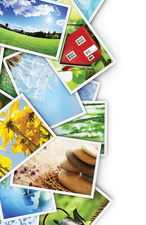Static galleries with Expose
Exposure Time

© Lead Image © ssilver, 123RF.com
Expose offers a wide range of configurable options for publishing static photo and video galleries in an easy-to-use tool.
There are plenty of reasons to use a static website generator for web publishing instead of a traditional content management system. Serving static pages requires only a web server, which dramatically simplifies the required setup. This, in turn, improves security and reduces maintenance overhead, as the minimal stack has fewer potential vulnerabilities and is easier to troubleshoot and keep up to date.
Moreover, since publishing static content can be done using a lightweight web server, you can host your site on modest hardware or an inexpensive virtual private server.
That's all fine and dandy, but most static generators are designed to work with text-centric content like blog posts and long-form articles. But, what if you want to publish a photo essay or a photo gallery? Enter Expose [1], a Bash shell script for generating static photo and video galleries (see Figure 1). The script is less than a thousand lines long, but it's capable of generating rather impressive galleries and photo essays, and offers a wide range of configurable options to boot.
[...]
Buy this article as PDF
(incl. VAT)
Buy Linux Magazine
Subscribe to our Linux Newsletters
Find Linux and Open Source Jobs
Subscribe to our ADMIN Newsletters
Support Our Work
Linux Magazine content is made possible with support from readers like you. Please consider contributing when you’ve found an article to be beneficial.

News
-
Debian Unleashes Debian Libre Live
Debian Libre Live keeps your machine free of proprietary software.
-
Valve Announces Pending Release of Steam Machine
Shout it to the heavens: Steam Machine, powered by Linux, is set to arrive in 2026.
-
Happy Birthday, ADMIN Magazine!
ADMIN is celebrating its 15th anniversary with issue #90.
-
Another Linux Malware Discovered
Russian hackers use Hyper-V to hide malware within Linux virtual machines.
-
TUXEDO Computers Announces a New InfinityBook
TUXEDO Computers is at it again with a new InfinityBook that will meet your professional and gaming needs.
-
SUSE Dives into the Agentic AI Pool
SUSE becomes the first open source company to adopt agentic AI with SUSE Enterprise Linux 16.
-
Linux Now Runs Most Windows Games
The latest data shows that nearly 90 percent of Windows games can be played on Linux.
-
Fedora 43 Has Finally Landed
The Fedora Linux developers have announced their latest release, Fedora 43.
-
KDE Unleashes Plasma 6.5
The Plasma 6.5 desktop environment is now available with new features, improvements, and the usual bug fixes.
-
Xubuntu Site Possibly Hacked
It appears that the Xubuntu site was hacked and briefly served up a malicious ZIP file from its download page.

